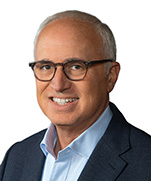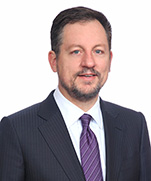The dream fueling the development of driverless systems is a world where people and goods are transported quickly and efficiently, and without the accidents, pollution or visual clutter that are inevitable when humans control each vehicle individually. In this imagined new world, each vehicle would be optimized for its intended use, allowing us to reclaim all of the time and money we currently waste sitting in traffic or waiting for goods to arrive. In fact, the technologies needed to support autonomous vehicles are improving so quickly that this dream could soon become a reality, which has awakened regulators and lawmakers to the pressing need to confront the issue of digital roadway management.
One key to facilitating connected transportation and autonomous vehicles is efficient management of the spectrum upon which the vehicles will rely. Regulators around the world will have to adopt, implement and, on an as-needed basis, refine the rules for how this spectrum will be assigned, used and protected from interference.
In the United States, the Federal Communication Commission (FCC), to facilitate vehicle-to-vehicle and vehicle-to-infrastructure communication, in 1999 allocated the 5.9 GHz wireless spectrum band for transportation communication traffic using dedicated short-range communication (DSRC). Since then, several automakers and a handful of state departments of transportation have outfitted vehicles and infrastructure with DSRC-based technologies. Not surprisingly, technology has improved significantly since then, leading to the development of various alternatives to DSRC, the most notable being cellular vehicle-to- everything (C-V2X) communication, a unified connectivity platform designed to offer vehicles low-latency vehicle-to-vehicle (V2V), vehicle-to-roadside infrastructure (V2I) and vehicle-to-pedestrian (V2P) communication.
C-V2X offers various advantages over DSRC. For example, C-V2X does not require a large-scale deployment of roadside units as it was designed to be compatible with forthcoming 5G mobile technology. Also, unlike DSRC, C-V2X uses two separate transmission modes: one for direct communications between vehicles, vehicles and infrastructure and vehicles and pedestrians and other road users; and the other for network communications. The former ideally would leverage the dedicated 5.9 GHz wireless spectrum band, while the latter would leverage traditional mobile service networks to enable vehicles to receive information about road conditions and traffic.
Under current FCC regulations, C-V2X systems cannot use the 5.9 GHz wireless spectrum band. But the agency is considering amending its rules to allow C-V2X or other technologies to be used as alternatives to DSRC. In coordination with the Departments of Commerce and Transportation, the FCC has launched a three-phase research plan to evaluate options for opening the 5.9 GHz wireless spectrum band for non-DSRC uses. Throughout the study period, stakeholders and the public will be able to express their opinion as to whether the 5.9 GHz wireless spectrum band should (1) remain allocated solely for DSRC; (2) be preserved solely for additional automotive technologies like C-V2X; or (3) repurposed, in part or in full, to meet increasing demands for additional unlicensed spectrum unrelated to automotive technologies.
Phase I of the research plan was completed in October 2018, and the FCC concluded that DSRC and non-licensed uses, such as Wi-Fi, are safely able the share the 5.9 GHz wireless spectrum band—a boon to C-V2X deployment, although its conclusion also opens up the possibility that the band’s repurposing could include non-automotive industries. After reviewing public comments on Phase I, the Commission, again in coordination with the DOT and NTIA, will move onto Phases II and III, described in the public notice as follows:
- Phase II: Basic field tests with a few vehicles at a DOT facility. The Phase II tests will determine whether the techniques to avoid interference that were evaluated in Phase I’s lab tests are effective in the field.
- Phase III: Tests in “real-world” scenarios, with many vehicles, more test devices and at a suitable facility.
The timetable for completion of Phases II and III has not yet been announced, but that is not stopping key stakeholders from making their preferences known.
To date, opinions on how the 5.9 GHz wireless spectrum band rules should be amended have varied significantly. Several automakers, hardware developers and state departments of transportation that are heavily invested in DSRC have, not surprisingly, advocated for maintaining the status quo. They argue that DSRC technology is both immediately available and has been validated as a means of reducing congestion and traffic fatalities. They also point out that a strong commitment to DSRC from the FCC would incentivize near-term investment by companies wary of investing in DSRC technology due to fear of its being rendered “obsolete” by changes to the FCC’s regulations. The Alliance of Automobile Manufacturers, for its part, is urging the FCC not to reallocate the 5.9 GHz wireless spectrum band, in full or part, to non-automotive uses, arguing that such a move could undermine transportation systems.
Not all auto manufacturers are on the same page. A coalition of automakers, device manufacturers and telecom operators that goes by the name “5GAA” vigorously support a fast rollout of C-V2X. Joining the 5GAA in its call to reallocate the band is Citizens Against Government Waste, a nonprofit, nonpartisan think tank on a mission to reduce government mismanagement. CAGW argues that the current restrictions on the 5.9 GHz wireless spectrum band are anticompetitive in that they stifle the growth and market viability of more effective 5G compatible technology.
Although the positions of the various stakeholders are unlikely to change significantly throughout the next two phases of the research plan, the findings of record may end up supporting one of the above positions.
Importantly, the US is not the only country debating the merits of C-V2X vs. DSRC. The EU and China are both mulling over their automotive communications options. At present, Europe is leaning towards DSRC while China seems to prefer C-V2X. For auto manufacturers, international regulatory disunion is disconcerting. In an industry dependent on international trade, manufacturers desperately want to avoid varying legal requirements and government preferences that could render their vehicle’s technology useless. Once the US concludes its three-phase examination, a domestic spectrum solution will come into focus. While international consensus is far from inevitable, it’s a battle worth fighting as clear decisions in major markets could influence stakeholders’ decisions in other regions. And if regulators remain at odds, the history of wireless mobile services has demonstrated technology’s ability to accommodate conflicting regional preferences.



